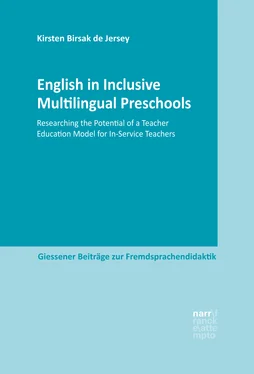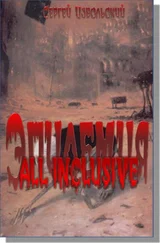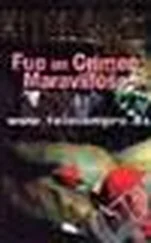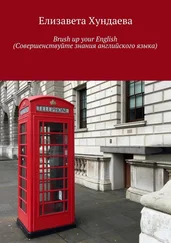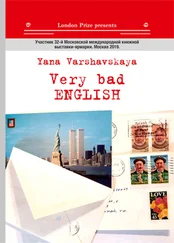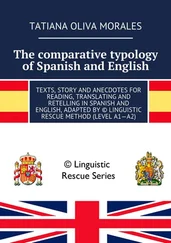Kirsten Birsak de Jersey - English in Inclusive Multilingual Preschools
Здесь есть возможность читать онлайн «Kirsten Birsak de Jersey - English in Inclusive Multilingual Preschools» — ознакомительный отрывок электронной книги совершенно бесплатно, а после прочтения отрывка купить полную версию. В некоторых случаях можно слушать аудио, скачать через торрент в формате fb2 и присутствует краткое содержание. Жанр: unrecognised, на английском языке. Описание произведения, (предисловие) а так же отзывы посетителей доступны на портале библиотеки ЛибКат.
- Название:English in Inclusive Multilingual Preschools
- Автор:
- Жанр:
- Год:неизвестен
- ISBN:нет данных
- Рейтинг книги:3 / 5. Голосов: 1
-
Избранное:Добавить в избранное
- Отзывы:
-
Ваша оценка:
- 60
- 1
- 2
- 3
- 4
- 5
English in Inclusive Multilingual Preschools: краткое содержание, описание и аннотация
Предлагаем к чтению аннотацию, описание, краткое содержание или предисловие (зависит от того, что написал сам автор книги «English in Inclusive Multilingual Preschools»). Если вы не нашли необходимую информацию о книге — напишите в комментариях, мы постараемся отыскать её.
English in Inclusive Multilingual Preschools — читать онлайн ознакомительный отрывок
Ниже представлен текст книги, разбитый по страницам. Система сохранения места последней прочитанной страницы, позволяет с удобством читать онлайн бесплатно книгу «English in Inclusive Multilingual Preschools», без необходимости каждый раз заново искать на чём Вы остановились. Поставьте закладку, и сможете в любой момент перейти на страницу, на которой закончили чтение.
Интервал:
Закладка:
This is particularly true for second language teacher education as we know since Lortie’s study (1975) who described “the phenomenon whereby student teachers arrive for their training courses having spent thousands of hours as schoolchildren observing and evaluating professionals in action” (Borg, 2004, p. 274) as apprenticeship of observation . “This contrasts with novices learning other professions, such as those of lawyers or doctors. … This apprenticeship, he argued, is largely responsible for many of the preconceptions that pre-service student teachers hold about teaching” (p. 274). Johnson and Golombek (2011) refer to Lortie’s early findings (1975) when they say that “teachers typically ground their understandings of teaching and learning as well as their notions about how to teach in their own instructional histories as learners” (p. 1). Wallace (1991) describes ideas, beliefs and attitudes as constructs , that is, a cluster of related concepts (p. 50). Just as the trainees that Wallace has in mind, the preschool teachers develop from the basis of a cluster of existing attitudes, ideas and beliefs on how children should be taught in general and how languages should be taught to children in particular. Therefore, it is a fundamental requirement to build on their attitudes, but also their knowledge and skills that they have accumulated through their experiences. This entails the need to re-assess their acquired teaching habits which may not support children’s language learning appropriately.
Stage 2: Received Knowledge covers “facts, data and theories often related to some kind of research” (Wallace, 1991, p. 12). Wallace uses this terminology to stress that the trainee “has ‘received’ (the knowledge) rather than ‘experienced’ it in professional action” (p. 12). His term experiential knowledge derives from Schön’s knowing-in-action and reflection (p. 13). He sees the experiential knowledge in professional action (practical experience) as the core of his reflective model which is in “a close, reciprocal relationship” with received knowledge (p. 52). This is depicted in his diagram through a reciprocal arrow that connects the experiential knowledge and relevant theory. The idea is that reflection works two ways: reflecting on received knowledge in association with classroom experience, and reflection on classroom experiences which is fed back into the received knowledge (p. 55). His model aims at providing a framework to accommodate the connection between theory and practice through a reflective process. During this process teachers develop their pedagogical content knowledge which is one of the essential competences my teacher education project aims to develop. It will therefore subscribe to this idea on the role of relevant theory in the reflective development process as the teachers will need to reflect on why they do what they do and for this purpose, they need to appreciate the theory that informs practice. In my model, received knowledge covers relevant theory that relates to the teaching of English to children. It involves the principles of the task approach and related research to understand the ways in which children learn foreign languages and may be best supported in this process. To support the reciprocal process of reflecting practice, relevant theory is integrated after or in between teaching practice phases if clarification and in-depth understanding of a practical incident is required. Wallace emphasizes that these two related elements of a teacher’s knowledge base, “the practice element … on the one hand and the reflective process on the other hand” (p. 56) need to be the core of what effective teacher education is about.
Before I turn my attention to the central components of the preschool teacher education model (→ chapter 5.6), which involve participatory demonstration lessons for preschool teachers to observe and take part in and also involves teaching the children cooperatively , the following chapter will first focus on the resulting complex roles of the teacher educator who, through this model, shares the responsibility to teach the children.
5.5 The complexity of roles of the teacher educator and researcher
The role of the teacher educator has been widely discussed in connection with approaches of professional development through action research. In their research Savoie-Zajc and Descamps-Bednarz (2007) describe the “composite role” of teacher educator and researcher as follows:
She was first of all an external resource who provided participants with the conceptual and practical frameworks to help them pinpoint the professional concerns upon which they wished to work and to reflect upon. She also organised the context where participants could share their experiences … with group members. The resource role extended to suggesting reading materials or websites when participants were seeking information on specific topics. … She was, finally, a researcher. (p. 582)
In the context of the preschool teacher education process, s/he also has to adopt a comprehensive number of roles. S/he is responsible to provide the content of the teacher education (such as the pedagogy of teaching English to children), to support teachers to re-write existing teaching materials to suit their children’s language learning needs (or to develop completely new teaching materials), to design preschool tasks and demonstrate in what ways they address children’s needs (which involves managing the processes resulting from putting the tasks to practice), s/he needs to acknowledge and aptly react to contextual constraints, s/he takes preschool teachers’ attitudes, skills or concerns seriously and s/he is able to establish a rapport with both the preschool children and with the participating preschool teachers. Her/his heterogeneous roles may best be described as that of a ‘counsellor’:
The counsellor should assist in developing teaching competence. It is the teacher’s own conscious development and growth that matters. … The counsellor cannot limit his task to the transmission of his own understanding but must take the skills, knowledge and values of the learner as the point of departure. (Handal & Lauvas, 1987, p. 1, 7)
Ideally, the teacher educator organises the education project in a way that her/his relationship to the teachers qualifies as collegial cooperation so that the preschool will be supported to become pro-active, play an active role and do not become completely dependent on the teacher educator:
Teaching is first and foremost a “helping profession,” which depends on the relationship created between the teacher and the learner. It is crucial therefore to determine which forms of help, or teaching, are most effective within that relationship. Such a determination depends on a number of variables: the purpose of the help (its objective), the particular context in which the help is being offered, and the interaction that makes up the process of offering and receiving it. (Freeman, 1990, p. 103)
This involves taking an emic insider’s perspective so that the subjective meanings and understandings that participants associate with their workplace and their development could be understood and eventually be reconstructed. It would be their interpretation of the situation that I needed to uncover to be able to view their development processes and the required support that needed to be provided from their angle (Croker, 2009, p. 8).
Support involved developing the preschool teachers’ confidence by actively involving them in teaching the children from the beginning so that they would systematically develop their competences and ultimately become autonomous professionals. In education autonomy is “the capacity of an individual to be an independent agent, not governed by others” (Boud, 1981, p. 18; as cited in Bailey, 2006, p. 56). “[It is] not an ability that has to be learnt but a way of being that has to be discovered and rediscovered” (Breen & Mann, 1997, p. 134; as cited in Bailey, 2006, p. 56). The teacher educator therefore has to encourage active participation of the preschool teachers from the beginning so that ideally a non-hierarchical relationship of working cooperatively with the children will result.
Читать дальшеИнтервал:
Закладка:
Похожие книги на «English in Inclusive Multilingual Preschools»
Представляем Вашему вниманию похожие книги на «English in Inclusive Multilingual Preschools» списком для выбора. Мы отобрали схожую по названию и смыслу литературу в надежде предоставить читателям больше вариантов отыскать новые, интересные, ещё непрочитанные произведения.
Обсуждение, отзывы о книге «English in Inclusive Multilingual Preschools» и просто собственные мнения читателей. Оставьте ваши комментарии, напишите, что Вы думаете о произведении, его смысле или главных героях. Укажите что конкретно понравилось, а что нет, и почему Вы так считаете.
